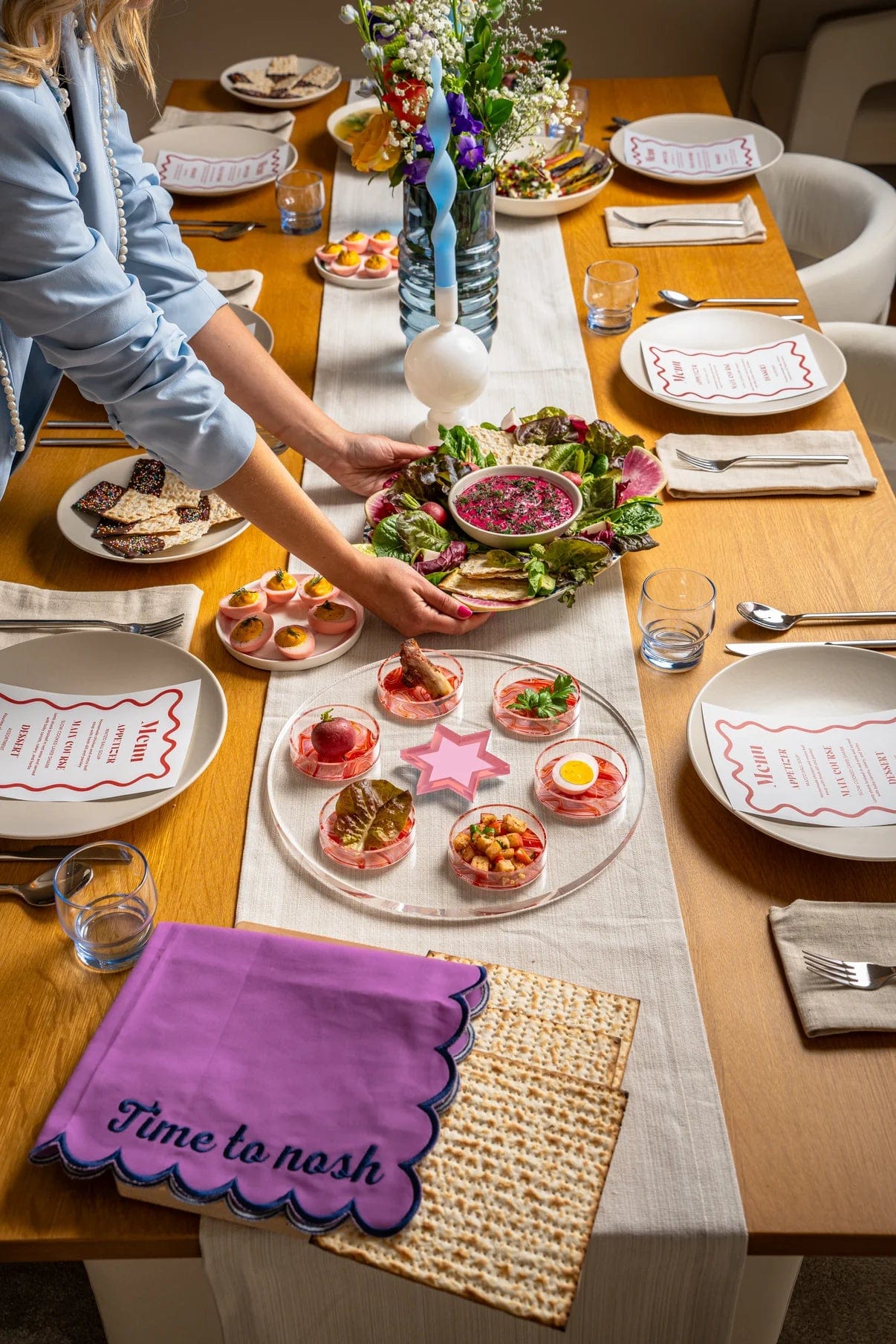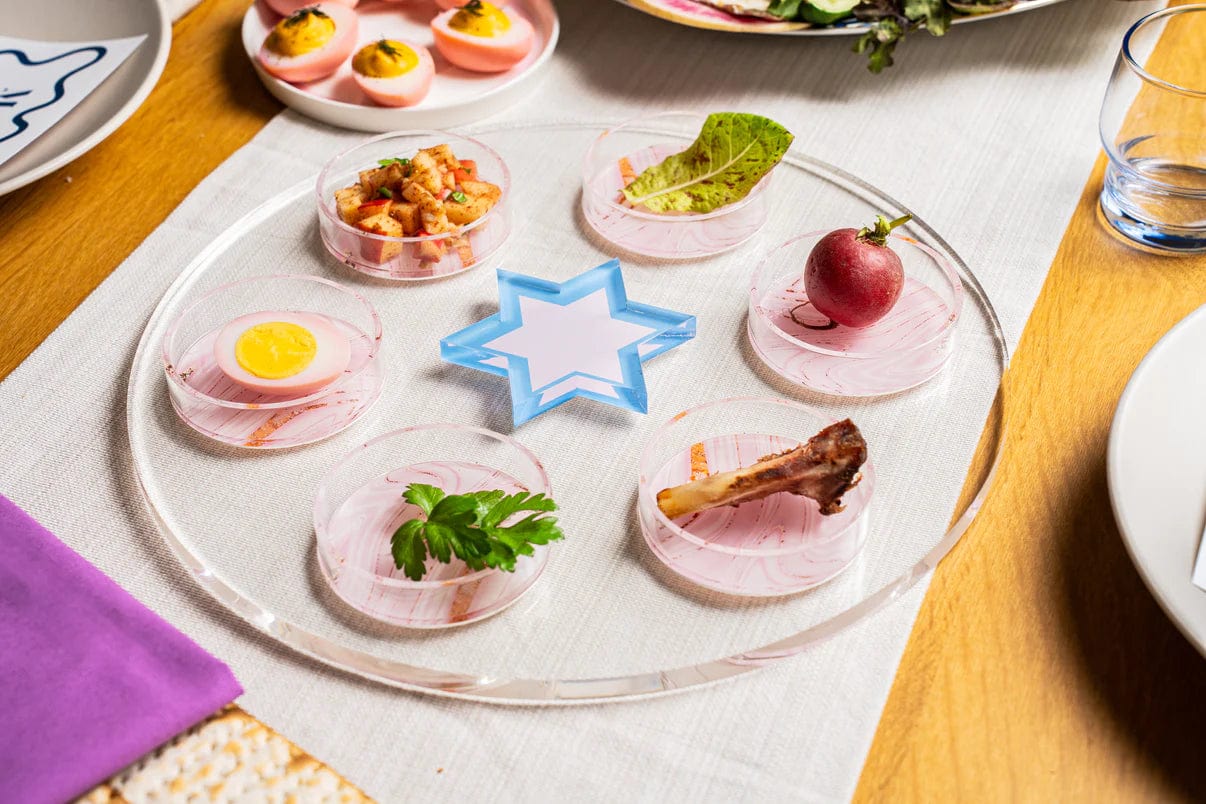Seder Plates for Passover
Seder plates for Passover are used during the Passover Seder (Hebrew for order) and hold symbolic foods. Shop beautiful Passover seder plates from artists like Laura Cowan, Jonathan Adler, Spode, Kate Spade and more. The best Pesach seder plate options are at ModernTribe!
Related Collections
Showstopping Seder Plates
The seder plate isn't just a dish for holding symbolic food - it's the centerpiece of your holiday table, telling a story that's thousands of years old. Why settle for one that isn't your style? We've got some of the most unique and beautiful seder plates crafted from materials like brass, glass, ceramic and wood. Whether you’re searching for something modern and fun or a stunning heirloom, we have the perfect seder plate for Passover to elevate your ritual. Find the design that speaks to your modern Jewish home and make a statement this year!
Got the plate? Now complete your seder with our gorgeous Passover tableware and fun Passover decorations.
Frequently Asked Questions
What is a Seder Plate?
▼
A Passover seder plate is a special plate used during the Passover seder, a ritual meal that commemorates the Passover. The plate holds symbolic foods that are arranged in a specific order, and each item has a particular significance in retelling the story of the Exodus from Egypt. The seder plate typically includes the following elements:
Matzah:: Matzah is a central element of Passover, symbolizing the haste with which the Israelites left Egypt. They didn't even have time for their bread to rise! There are usually three pieces of matzah on the seder plate, representing different aspects of the Passover story.
Maror (Bitter Herbs): Bitter herbs, often horseradish, represent the bitterness of slavery endured by the Israelites in Egypt.
Charoset: Charoset is a mixture of chopped apples, nuts, wine, and spices. It symbolizes the mortar used by the Israelites to build bricks during their enslavement.
Karpas (Parsley or Green Vegetable): This represents the freshness of spring and is often dipped in salt water, symbolizing the tears shed during slavery.
Zeroa (Shankbone): A roasted lamb shankbone or another bone, symbolizing the Paschal lamb. It is a reminder of the lamb's blood that the Israelites marked on their doorposts during the tenth plague.
Beitzah (Hard-Boiled Egg): The egg represents mourning and rebirth. It is often dipped in salt water or vinegar before being eaten.
Additionally, some seder plates may include other items such as an orange (symbolizing inclusivity) or olives (symbolizing peace).
The arrangement of these items on the seder plate is symbolic, and they are referenced and consumed at specific points during the Passover seder as part of the retelling of the Exodus story.
How do I choose the right seder plate for Passover that matches my style?
▼
Think of your seder plate as the crowning glory of your table setting! If your home vibe is clean and modern, look for materials like sleek metal or minimalist ceramic. If you love color, try our hand-painted or artisan glass seder plates. We even have fun designs (hello, baseball-themed plate!) if you want a guaranteed conversation starter. The "right" one is simply the one you'll love using for years to come.
Are the names of the symbolic foods labeled on your seder plates?
▼
Many of our seder plates are clearly labeled - some feature the Hebrew names, some feature English, and some even have both! For an ultra-modern, minimalist look, we also offer plates without labels, allowing you to use them year-round as a serving piece. You can easily check the product description for details on labeling.
Do you carry seder plates from Israel?
▼
We do indeed carry seder plates from Israel as well as seder plates from USA!
Which seder plates are the most durable for use with children?
▼
For maximum durability against the ten plagues of spilled wine, dropped eggs, and general chaos, we highly recommend our melamine or lucite seder plates. We also carry seder plates for kids that carry a fun twist on the tradition.
Why Shop ModernTribe?

60K+ happy customers

Easy returns

Free shipping over $75










